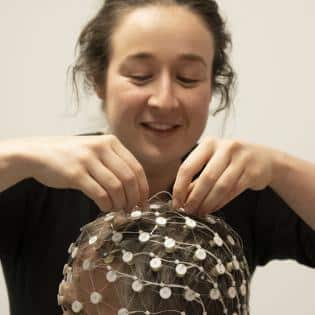There are numerous factors that prospective MBA students take into account when considering who they will study with, but recent research from Deakin University could leave you with another decision to add to your list – namely, where you should study from.
That’s because Isabella Bower, PhD Candidate and Research Fellow in the Faculty of Health at Deakin has published some research that examines the link between the design characteristics of interior built environments and the parts of your brain that are involved in cognitive processes such as perception, attention, and emotion regulation.
Her research sought to understand the effect of changing certain characteristics in a virtual reality room on the brain and body. Electroencephalography was used to measure brain activity, while heart rate, breathing, sweat response, and emotions were also monitored.

“Making the room bigger resulted in brain activity usually linked to attention and cognitive performance. This is the type of brain activity we would see if you were doing a crossword, your homework or focusing on a tricky report you were writing for work,” said Ms Bower.
“A blue room resulted in brain activity associated with emotional processing. This is the pattern we’d typically see if you were looking at something that you felt positive about, such as a smiling face, or a scenic sunset.
“Changing the size and colour of a room also changed brain network communication. This is when different parts of the brain “talk” to one another. This could be communication between parts of the brain involved in seeing and attention, the type of communication needed when viewing a complex scene, such as scanning a crowded room to spot a friend,” continued Ms Bower.
The rooms also changed the participants’ autonomic response (their patterns of breathing, heart activity and sweating).
“Despite these brain and body responses, we found no change in what participants told us about their emotions in each of these different conditions,” Bower said.
How does this research relate to a prospective MBA student’s decision-making journey? It shows that when you’re considering your mode of study (online versus offline), you may also need to think about the design characteristics of your home office, university library or coffee shop where the majority of your study is likely to take place.
Right now we know that the size and colour of the room you choose to study in can impact you cognitively, but stayed tuned, because future studies by Ms Bower may even shed some light on how to optimise your cognitive performance.







